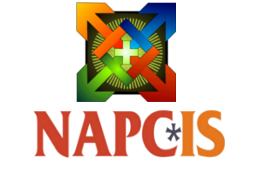A Safe Harbor for Private Schools from Common Core Testing Uncertainty
By Denise Donohue and Dan Guernsey
 Some private schools are hastily switching to adapt to the Common Core State Standards because they fear they will have to use the new testing still in development by PARC and Smarter Balance and which will be intimately tied to the new CCSS. The problem is many private schools are doing just fine in solid math instruction and can prove that by a long history of nationally normed Iowa scores that, unlike the new test, have years of correlation with the ACT college entrance exams. Yet private schools are fearfully adopting the untried and problematic pedagogies behind some of the instruction tied to the Common Core to ensure that their test scores don’t decline on the new Common Core tests.
Some private schools are hastily switching to adapt to the Common Core State Standards because they fear they will have to use the new testing still in development by PARC and Smarter Balance and which will be intimately tied to the new CCSS. The problem is many private schools are doing just fine in solid math instruction and can prove that by a long history of nationally normed Iowa scores that, unlike the new test, have years of correlation with the ACT college entrance exams. Yet private schools are fearfully adopting the untried and problematic pedagogies behind some of the instruction tied to the Common Core to ensure that their test scores don’t decline on the new Common Core tests.
A solution to this problem for private schools exists in the new Iowa Testing form E. Details are below, but this test is 2011 normed, prior to the introduction of Common Core. This means your private school has at least 5 years of valid nationally normed testing to continue to use while the Common Core works out its many issues and gets its own normed testing in place. It is also possible the Common Core will be severely changed or dropped as it is implemented on a national scale. The Iowa Form E also has a provision to dual evaluate your students using the new Common Core Standards, if you so chose. But the good news is you do NOT have to adopt the Common Core right now in fear of being left out of a valid nationally normed test. Adapt to the Common Core and change your math and English instruction only if you truly want to and only at your pace, not due to testing fears.
Here are the details:
Schools who have been using the Iowa Test of Basic Skills (ITBS) Forms A, B, or C, might consider moving up to the newest Iowa Form E. This form offers a dual reporting option allowing administrators to switch between traditional reports and reports categorized according to the Common Core State Standard (CCSS) categories for Math and Language Arts. When choosing the “DataManager” web-based test management option, available in Form E only, the school-testing administrator can toggle between these reports. Each test question in Form E has been coded to CCSS categories. By using this form, school administrators, who are concerned about their particular stage of CCSS implementation, can compare and better judge how their students would fair in these categories.
New editions of these achievement tests are available approximately every 10 years with a re-norming process undertaken every 5 years. The norming process consists of administering the test to a similar group of students whose scores are used for comparison. Generally, the normed group is from a national sample of students. Other groups used for comparison could be from a local geographical area, district, or diocese.
Riverside Publishing is the marketing company and publisher for the Iowa tests created by the University of Iowa. They market and provide consulting services to school administrators interested in using these tests. The Iowa, Form E, is the newest edition to the assessment suite (with Form F on its way) and was developed in 2010, before the Common Core Math and Language Arts Standards were finalized (Michele Baker, personal communication, Sept. 17, 2013). Norming for the 2010 Form E was performed in 2011, before most schools fully implemented CCSS. New norms for Form E can be expected every 5 years and according to Michele Baker, Senior Assessment Consultant for Riverside Publishing, Houghton Mifflin Harcourt, Form E will probably be available for 10 years or longer, at which time a newer edition will be released along with a new set of norms. By purchasing the Form E or Form F version (a parallel version using the same norms) of the Iowa assessments, administrators would have the newest test based on pre-CCSS norms and full implementation.
It is important to note that schools switching from the Iowa Form C to the Iowa Form E (or F) will not have comparable data during the year of the switch due to the different norming groups used for each test. Once the switch is made, though, and the school continues to use the same form and norming group, data can again be compared from year to year. Schools can either phase the change in by grade level, adding the new form incrementally over several grades at a time, or implement the new form for all grades during the same year. The first option spreads out the cost of the materials over several years, but might create confusion for parents whose children are in the class making the switch. Implementing a full changeover in one year might by more costly, but it would allow the administration to explain the use of the new form and address parent concerns all at once. It is recommended by Riverside that the first year be used as a baseline measure to assess future growth. Until, or if, there is an alignment of curricula (specifically classroom instruction) to the test assessment, there will be fluctuations in test scores. It is important to note that achievement tests are designed to measure what students know, predominately by what they are taught, and by using the Form E (or F), schools can compare their current curriculum against the standards set by the Common Core even before full, or partial, implementation of Core standards.
Additionally, one benefit of using the Iowa tests is that the standard scores students receive on Iowa tests have been validated and found to have a strong relationship with ACT college benchmark scores for college readiness (Iowa Testing Programs, n.d).
Administrators and others interested in purchasing Iowa assessment may do so by downloading a purchase order form at Riverside Publishing order Form E. Form E test booklets, answer sheets, and directions may be ordered from this site. Another interesting site that compares the costs of new CCSS tests with the Iowa tests is from the Washington Policy Center March 2012.
References
Iowa Testing Programs (n.d.). Tracking growth towards readiness with the Iowa
tests. Retrieved from https://itp.education.uiowa.edu/ia /documents/Assessment-Brief-Readiness-Final.pdf



